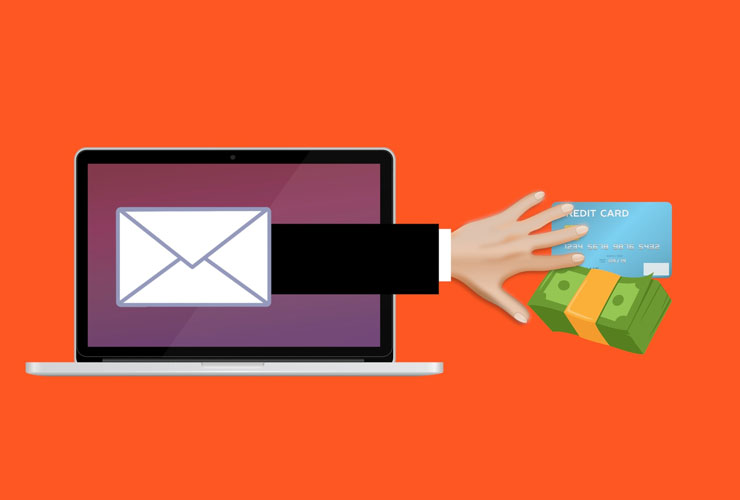How to Spot a Phishing Email: Tips and Examples to Keep You Safe

Phishing emails are a type of cyberattack that attempts to trick the recipient into giving away personal information, such as login credentials or financial details.
These emails often use social engineering tactics to create a sense of urgency or panic, making the recipient act before thinking. In this article, we will explore in more detail how to detect phishing emails and provide some examples to help you better identify them.
- Check the sender's email address. One of the easiest ways to detect a phishing email is to check the sender's email address. Scammers often use fake or spoofed email addresses to make their messages appear legitimate. For example, a phishing email that pretends to be from PayPal might have an email address like "paypal@securepayments.com." It is important to remember that legitimate companies will always use their own domain name in their email addresses, such as "paypal.com."
- Look for urgent or threatening language. Phishing emails often use urgent or threatening language to make the recipient act quickly without thinking. For example, an email that claims to be from the IRS might say that the recipient's tax refund is at risk if they do not click on a link and fill out a form immediately. Other common tactics include warning recipients that their account has been compromised or that they need to reset their password urgently. Be wary of any email that demands immediate action or threatens consequences if you don't respond.
- Check for generic greetings. Legitimate emails usually address the recipient by name. If an email starts with a generic greeting like "Dear Sir/Madam" or "Hello Customer," it could be a phishing attempt. For example, a phishing email that pretends to be from Amazon might say "Dear Amazon Customer" instead of addressing the recipient by their name.
- Beware of unexpected attachments or links. If you receive an email with an unexpected attachment or link, do not click on it. Scammers often use these to deliver malware or steal your personal information. Always verify with the sender first before clicking on any links or downloading any attachments. For example, a phishing email that pretends to be from a shipping company might contain a link to track a package that the recipient is not expecting.
- Check for spelling and grammar errors. Phishing emails often contain spelling and grammar errors. Legitimate companies usually have a professional copywriter, or editor proofread their emails before sending them out. For example, a phishing email that pretends to be from a bank might contain errors like "Dear Valued Cutomer" instead of "Dear Valued Customer."
- Look for suspicious branding. Scammers often use logos and branding from legitimate companies to make their emails appear real. However, looking closely, you may notice minor differences in the branding or logo that indicate the email is fake. For example, a phishing email that pretends to be from a social media company might use a similar logo, but the colors or design may be slightly different.
- Check the website URL. If you do click on a link in an email, be sure to check the website URL before entering any information. Phishing emails often use fake URLs that look similar to legitimate ones but lead to a fake website that collects your personal information. For example, a phishing email that pretends to be from a bank might have a link that looks like "www.bankofamerica.com," but the actual URL is “www.bankofamerica-secure-login.com.”
Phishing emails are a dangerous cyberattack that can have devastating consequences, including identity theft and financial loss. However, by following the simple tips outlined in this article, you can learn to identify phishing emails and protect yourself from these attacks.
Here are some more practical tips:
Be cautious of emails that claim to be urgent, such as asking for immediate payment or threatening to close your account. Scammers often use these tactics to get you to act without thinking.
- Watch out for emails that ask for personal or financial information, such as your Social Security number or credit card details. Legitimate companies usually do not request this information via email.
- If an email appears to be from a government agency, double-check the email address and any phone numbers provided. Scammers often pretend to be government officials to trick you into giving away personal information.
- Be suspicious of emails that include suspicious or unexplained attachments or ask you to download software. These attachments or software may contain malware that can harm your computer.
- Consider using anti-phishing software, such as a browser extension or security app, to help detect and block phishing emails.
By following these additional tips and tricks, you can better protect yourself from phishing attacks and keep your personal information safe.
It's important to remain vigilant and cautious when receiving emails from unknown or unexpected sources. Always take the time to verify the message's authenticity before clicking on any links or downloading any attachments.
In addition to these best practices, technological tools are available to help you detect and prevent phishing attacks. For instance, Firewall AI Android is an advanced security app that uses machine learning to identify and block phishing links in real-time. With this innovative technology, you can stay one step ahead of cybercriminals and enjoy peace of mind knowing that your sensitive information is secure.
To learn more about Firewall AI Android, please visit: https://www.protectstar.com/en/products/firewall-ai